Well here it is, finally finished, and despite its building flaws - GORGEOUS!
Due to some promises made long ago, requests, and the urgings of some members these pics are finally going up, with explanations to boot.
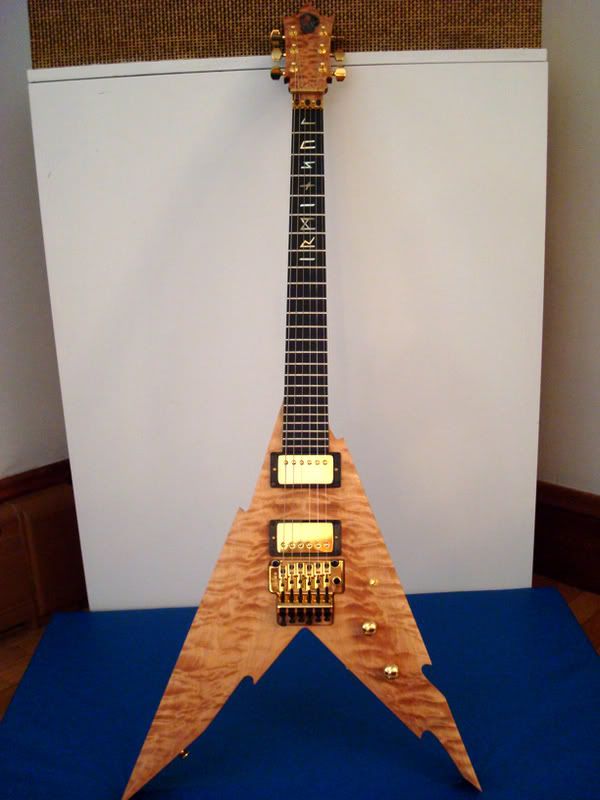
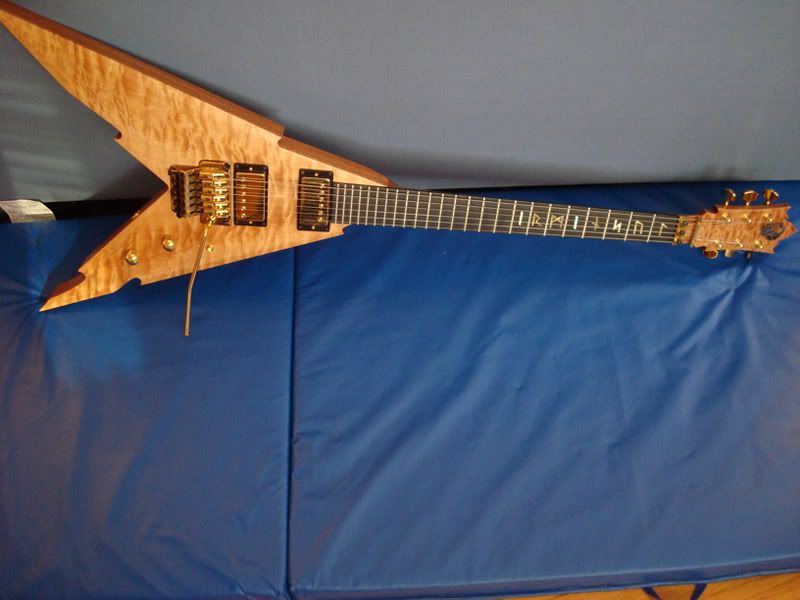
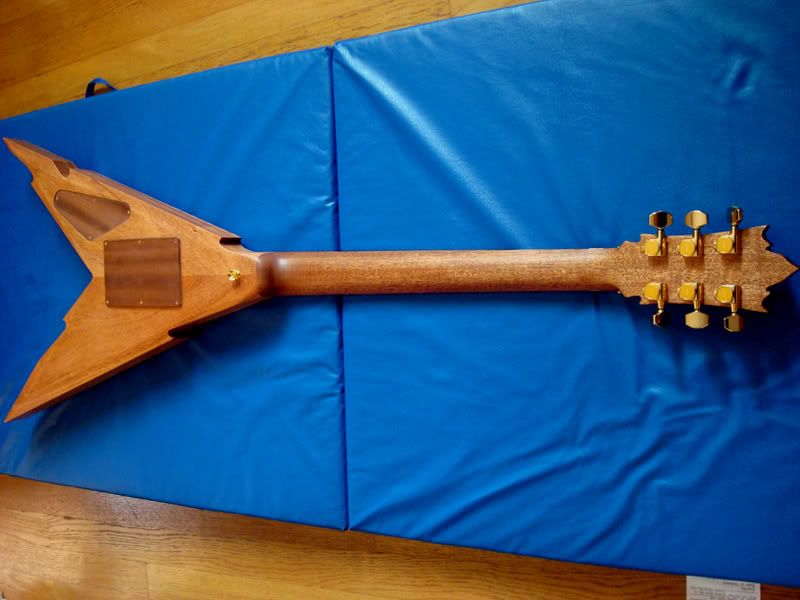
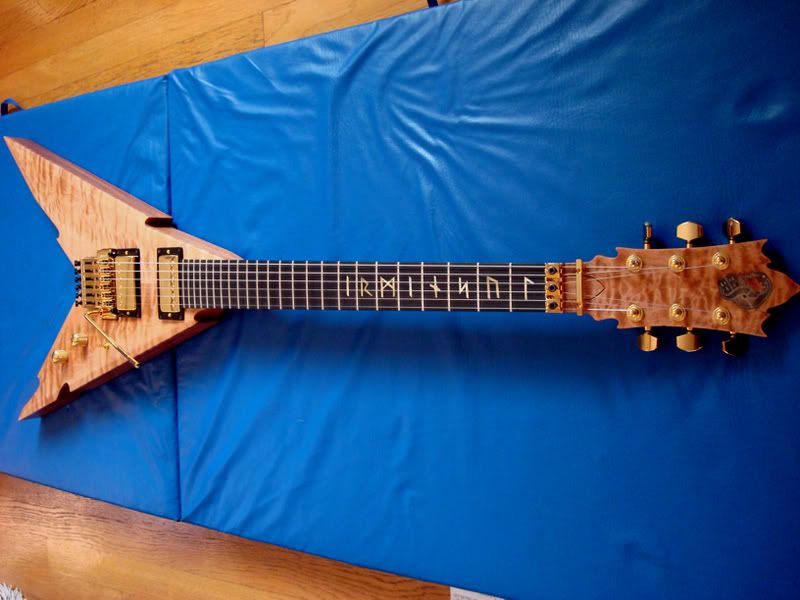
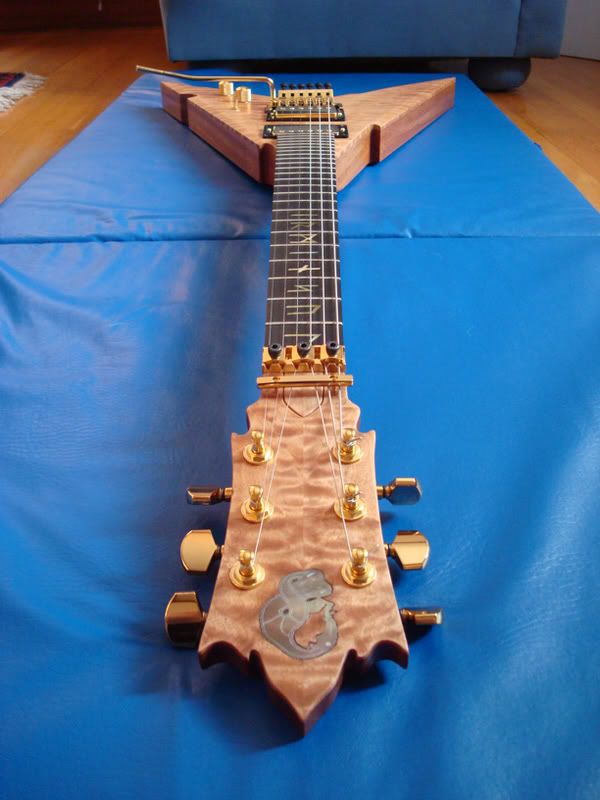
Before we go further i know you all want the specs:
630 mm scale lengthBody Wood: Mahogany
Top Body Veneer: Quilted Maple (uh huh!)
Neck/Headstock Wood: Mahogany
Headstock Veneer: Quilted Maple (an off cut from the same piece)
Fingerboard Wood: Ebony
Control Cover wood (yeah, they aren't plastic :))
: plywood with .5 mm laminations of mahogany on either side
Hardware: Firstly, everything is gold plated as you can see; Gotoh tuners, Gotoh licensed Floyd Rose, um i dunno who made my control knobs
Frets: Jumbo - .28 (???)
Thickness @ 1st fret: 19mm
Thickness @ 14th fret: 21.4mm
Pickups: VHII (neck), Nailbomb (bridge)
Pots: 500K Mexican production (forgot the company)
Inlays - Neck: Gold Mother of Pearl
Inlay - H/S: Black Tahiti Pearl
Engraving Paint filler: Silver Acrylic
Now moving on... I LOVE THIS GUITAR!!! It plays better than any damn guitar i have ever played! I will never be impressed going into a shop now, never be impressed sitting down with a stock guitar - this one crushes them all with a mighty wood fist! It feels great to hold too, and the surfaces are soooooo smooth that i literally can't keep my hands off of it (don't get any ideas guys :D). The Mahogany and Quilting could not be more goldeny, THEY JUST SHIMMER! The worst part about this whole experience was i struggled with tendinitis the entire time i was making it. It was very painful, especially using a chisel and stoning the frets :roll:. Other than that, this was one of the most fun experiences of my life! This is a product of my time @ Totnes School of Guitarmaking - of course this was my original design :P. And note too, that if anyone tries selling this design to that abomination of a guitar company B.C. Rich (or any company for that matter), i will... leave that to your boundless imaginations - i have my ways :twisted:.
NOW FOR MORE PICS!
Some headstock pics:
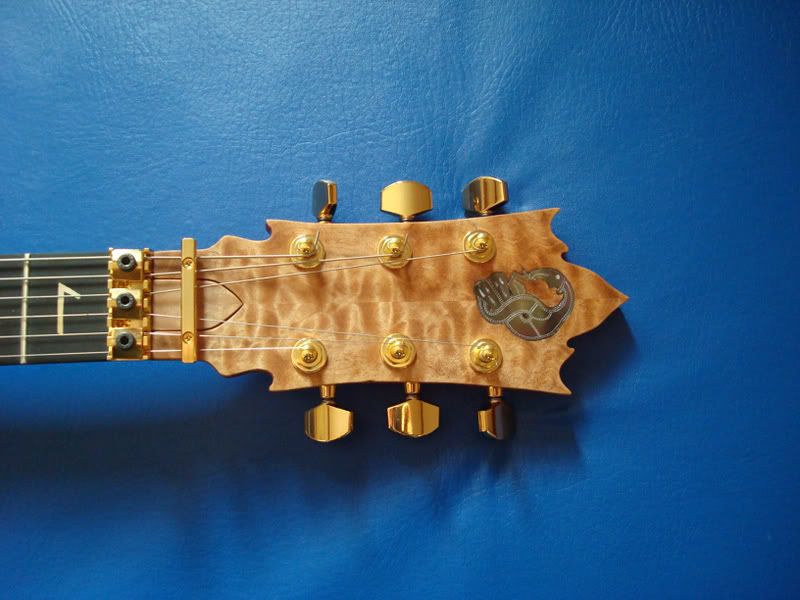
The beauty itself!
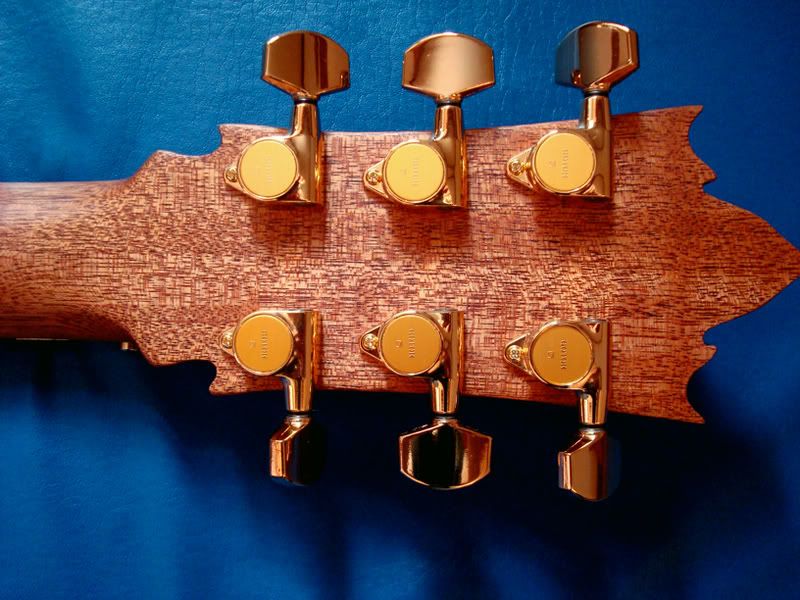
The back
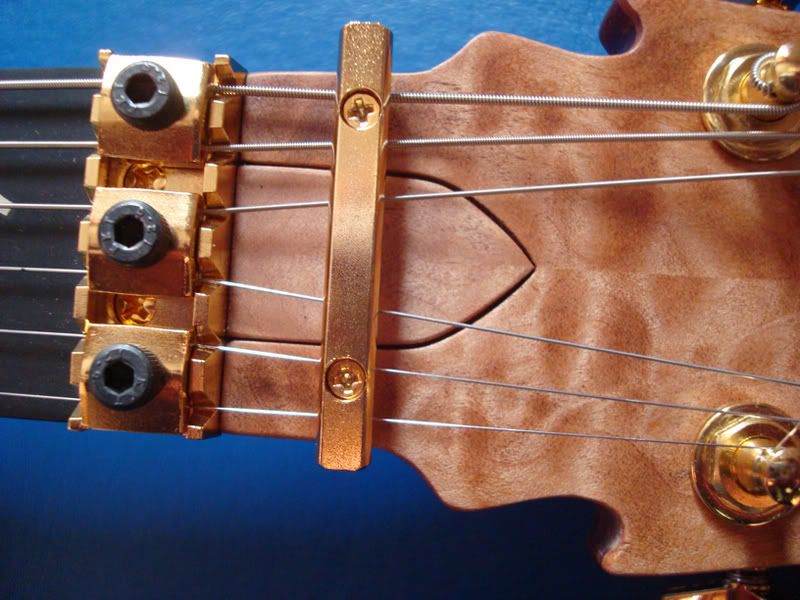
Truss Rod Cover
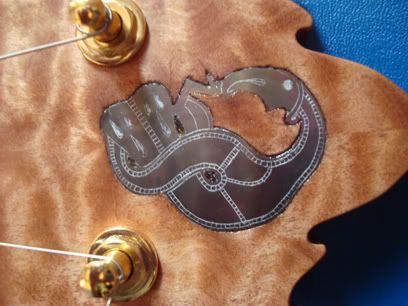
Headstock Inlay
Some notes about the above:
The top of the headstock where you see that nice outline design took me about 10 hours all told, this is due to bad cutout skills, and the fact that it is a fvcking hard shape to get! The whole headstock shaping must have taken me well into the 30 hour range. Now this does not include the h/s inlay, that thing took me roughly 30 hours alone. If you consider the fact that it was my first time cutting pearl and using an engraving tool, it was a decent job, i suppose. However, if i had given it about another 10-15 hours it would have come out a lot better. The engraving must have taken me 11-12 of those 30. As noted above the veneer is an off-cut from my body veneer wood, and i couldn't be happier with the figure! Can anyone guess what the H/S inlay is of (who has brushed up on their Scandinavian artifacts lately?)? Just to let you know, you won't get a cookie if you guess right :P. I will give you a hint, it is one of the noblest of the bird family (if not the most noble), a carrion bird, in fact! Finally the truss rod cover! This is a cutout from the h/s veneer itself, so it is all the same beautiful wood! It is fastened on there with a magnet so it is flush with the surface, no screws here folks! We had to put a tiny bolt of some kind into the truss rod cavity at the top, which we fixed with araldite, so that the cover would not fly up and attach itself to the strings!
More pictures: Body
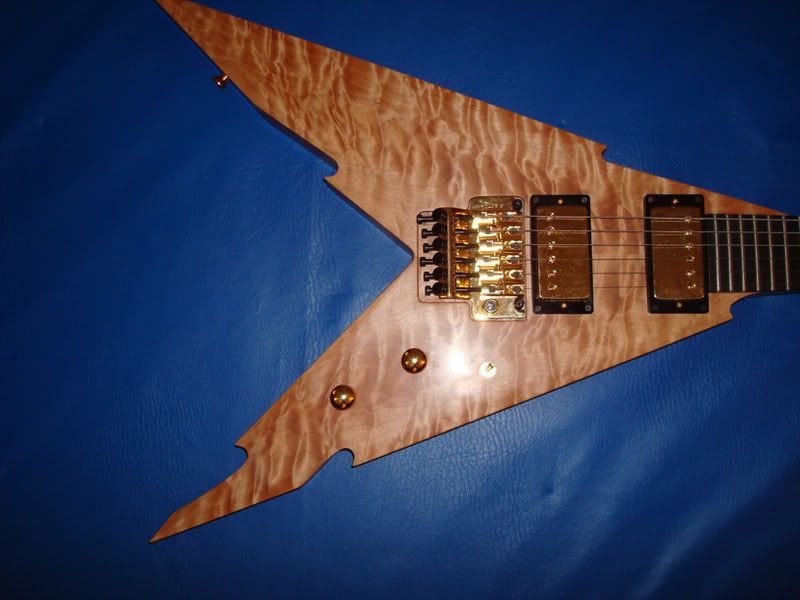
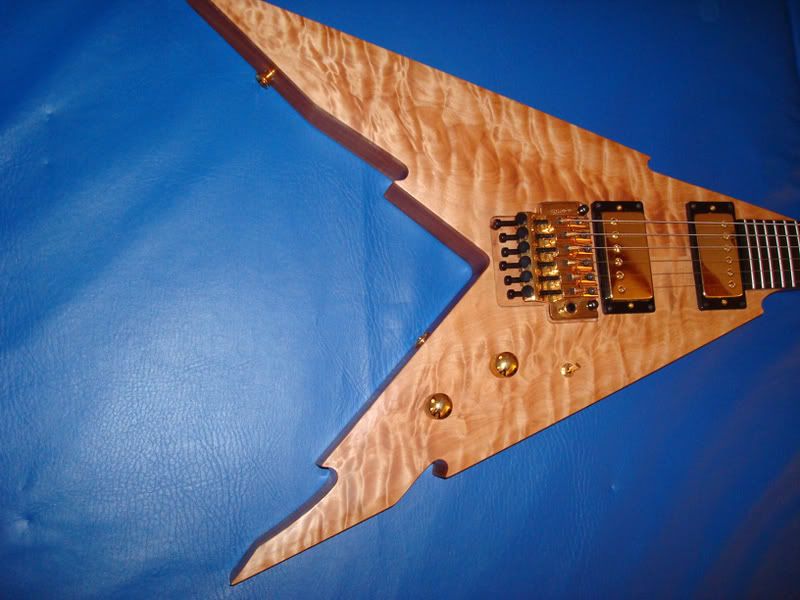
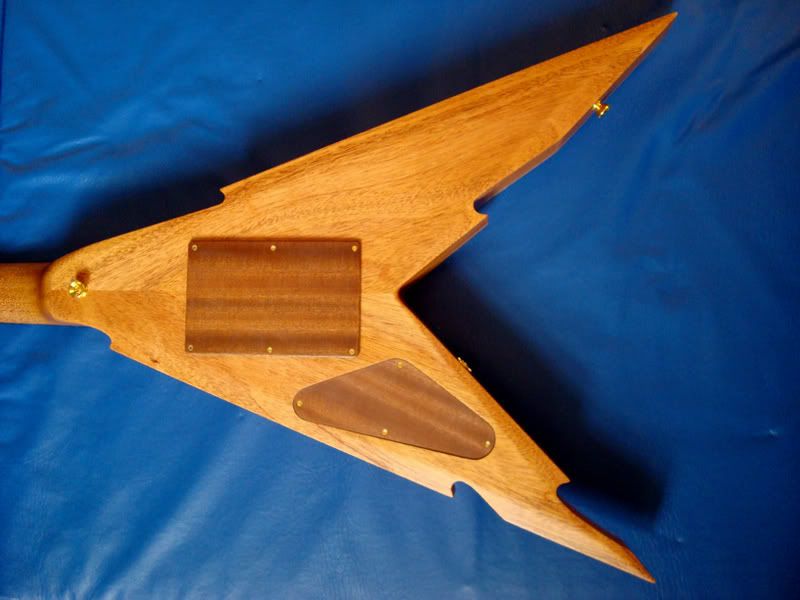
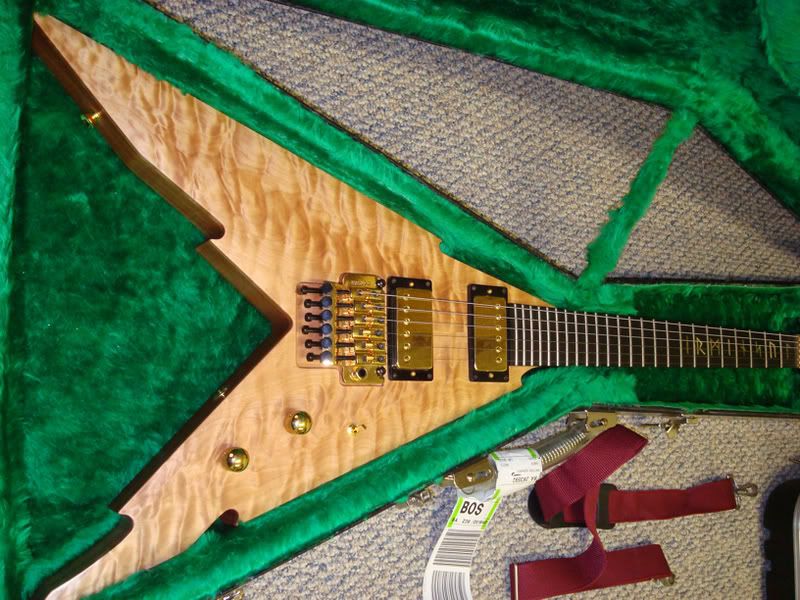
I don't know that there is much to say about this part except HOLY shiteE! So stunning, at least, i think so. As already noted, the control covers were laminated with very thin veneer mahogany. They came out 100 times better than i expected. I guess here would be a good time to discuss my "paint job." It is one of sorts, but more like a protective coating. I just used epoxy, i have forgotten the exact stuff (of course i can always ask), but it was thick and strong. I coated, sanded, and then coated again and then used micro mesh up to 12000 grit (yes that is the right number) to get that beautiful sheen. The control covers were coated only once, because that is all i had time for. If i had the time i would have coated everything 5 maybe 6 times. That quilting just soaks the epoxy up and screams for more, i found myself constantly applying it to the quilting during the coating process. One other thing to note, that you may or may not have spotted, is that i beveled the edges on the body profile (both back and front), though they are harder to see on the front. Also you will notice the shaping of the body, i did this for two reasons: 1. - To lessen the weight and make it even
more streamlined. 2. - on the right side, if one is facing the guitar, you will see my adaptation of a cutaway. Like so may V's out there, there is altogether WAY TOO MUCH material around the higher frets, making access to them nigh impossible, or very uncomfortable. This "cutaway" of sorts eliminates that problem, if i were to do this again however, i would have put it 5-10 mm lower than it currently is.
More pics: The Neck
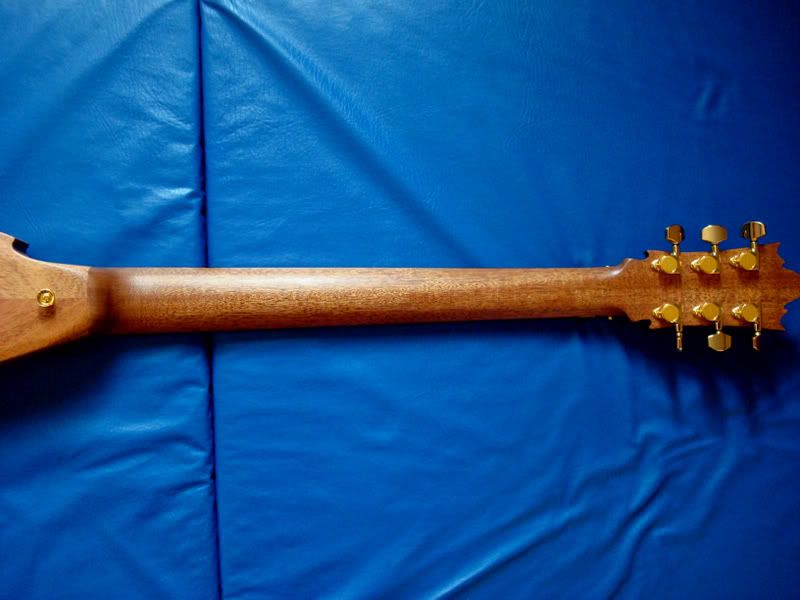
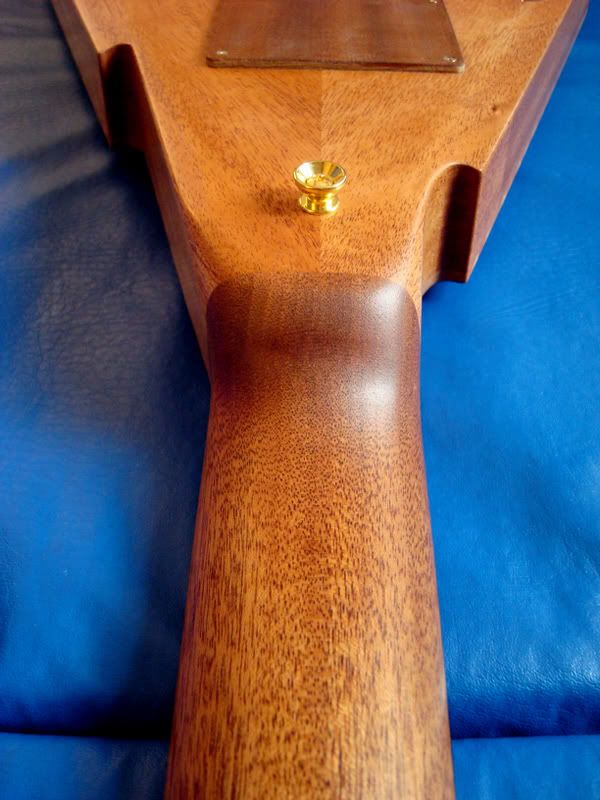
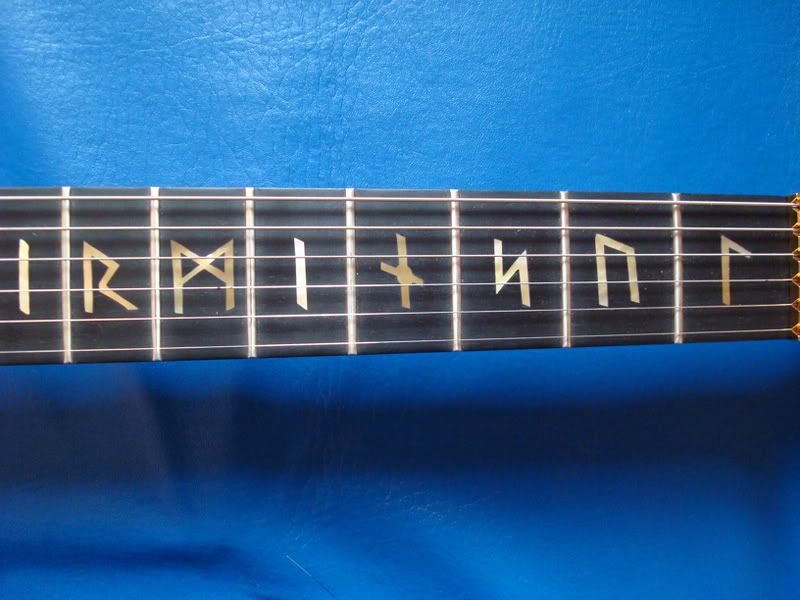
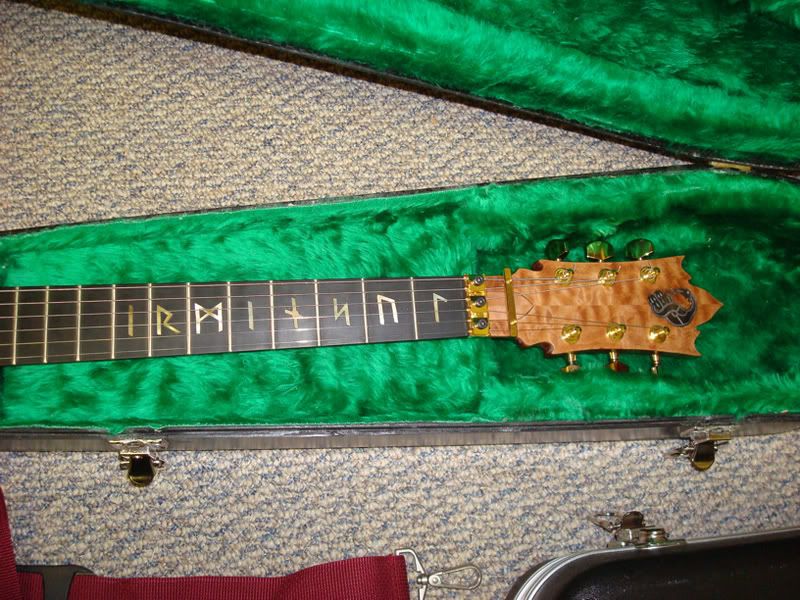

My, if i do say so myself, beautiful (though somewhat flawed) fingerboard inlays
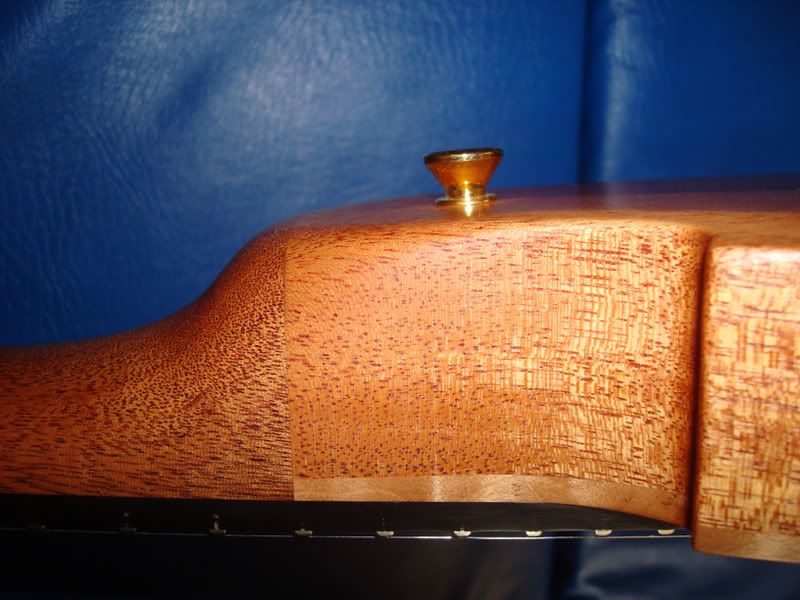
My custom designed heal
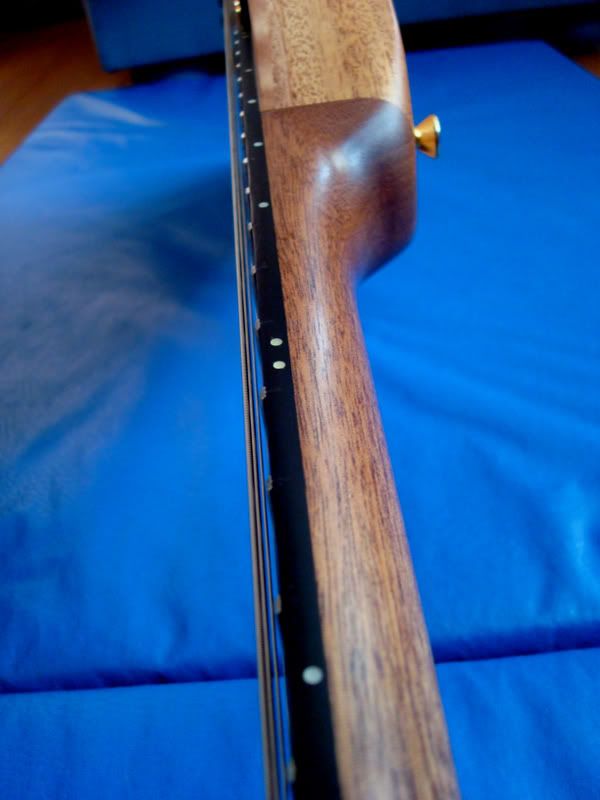
Side fret markers
Well, this is one thing i thought i would never finish, but did, fortunately. The neck plays beautifully, it is a very understated "D" shape, if you ever had a fast neck, you haven't felt this one, LET ME TELL YOU! O the neck is lovely, but moving on. The heal is heaven, i mean this is THE BEST "all access" heal i have ever felt for a set neck model. It was an idea of mine because i really wanted to get up on the 22nd-24th frets with ease (hello screeching dissonance!). So what i did was to plane a 3mm decline, thus making the thickness far less - it is amazing how such a little amount of wood taken off makes all the difference in the world. Not only this but i rounded it off on both sides so it tapers in, i can literally cup it in the palm of my hand, it is that good! Never thought i could get it with a set neck, but i did! :o
Here are the figures for my relief in the frets:
Low E: 0.15 bigger, A: 0.15 smaller, D: 0.1 bigger, G: 0.1 smaller, B: 0.05, High E: 0.03ish
Relief in fingerboard is as follows:
Low E and A: .1, D and G: .05, B and High E: 0.0
Other things to note are the side fret markers, all Gold MOP. This is one of the things i am most unhappy about with my guitar, they are very inaccurately placed so they are at different heights, looks like shite to me. Another thing that i don't like about them is that after sanding they gold started to wear away (which is only natural) considerably, so they now look more like White MOP. Anyways, those complaints are negligible, i suppose. The fingerboard inlays are, despite some gaps from sanding (minor - but to me MAJOR), beautiful! All Gold MOP, the whole process of clearing out the wood in the ebony, cutting them out and fitting them must have taken a good 18 hours, if not more. Can anybody read what it says? It is not english, i can tell you that. Anybody brushed up on their Elder Futhark lately? Well i will just give this one to you free, it says "I R M I N S U L", that would be Irminsul (Incidentally, this is the name of my guitar) with similar name etymology to Yggradsil the Norse variant.
This is known, as the tree of life that connects heaven and earth, ergo the eagle (o well, i gave it away) at the top of the tree representing the utmost of wisdom and knowledge. The Saxons or peoples inhabiting Northern Saxony at the time, when they were still a continental "tribe" would worship this tree on sacred days; they would strip down a massive tree and erect it has a holy worship place. The christians (I.E. - Charlemagne), when coming in to convert and debauch found 1 if not more of these holy trees, or posts, around several places in northwestern Europe and promptly cut them down afterwards to dissolve the symbological worth of the people's physical pagan monuments.
And finally, here is one last one of my custom case:
